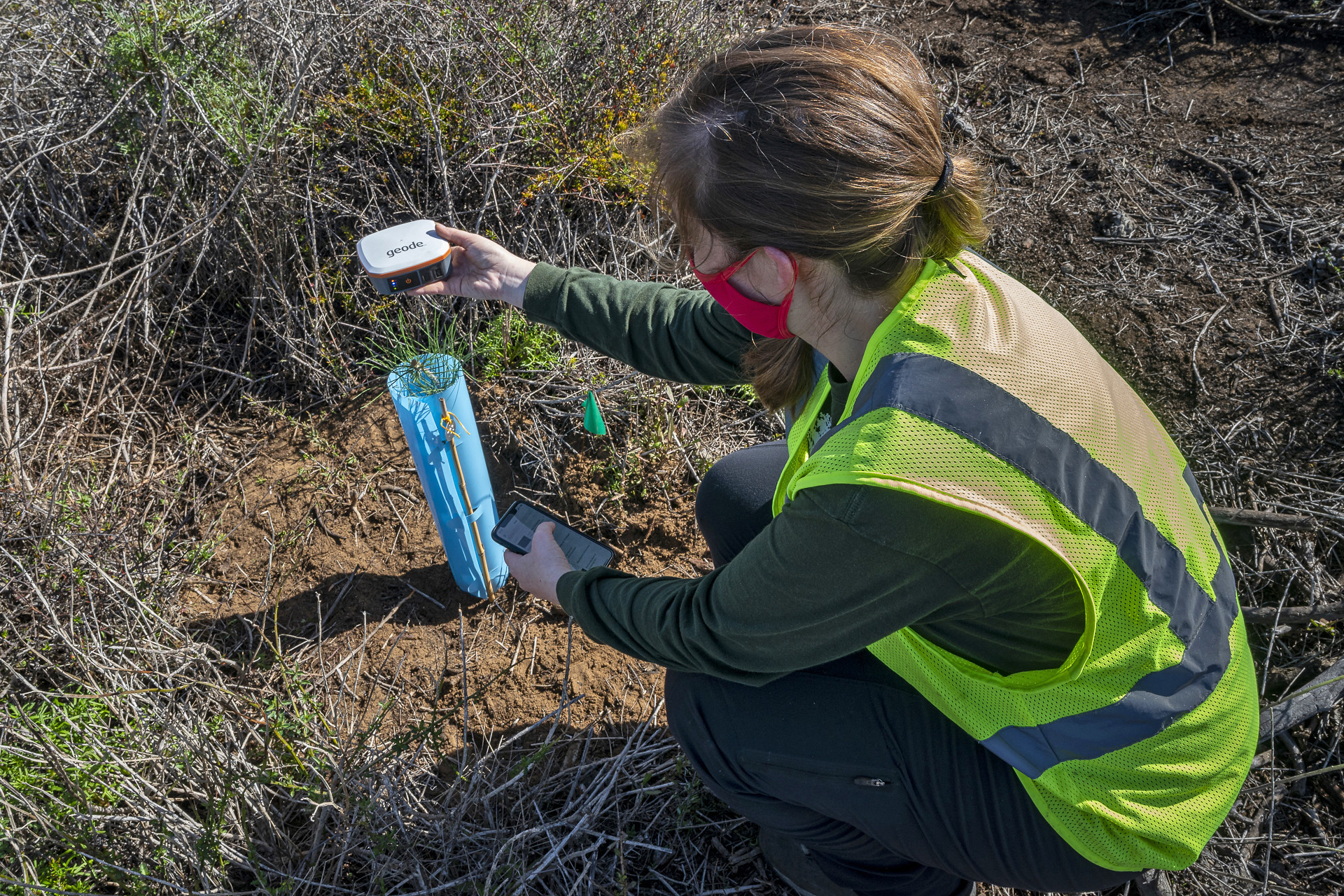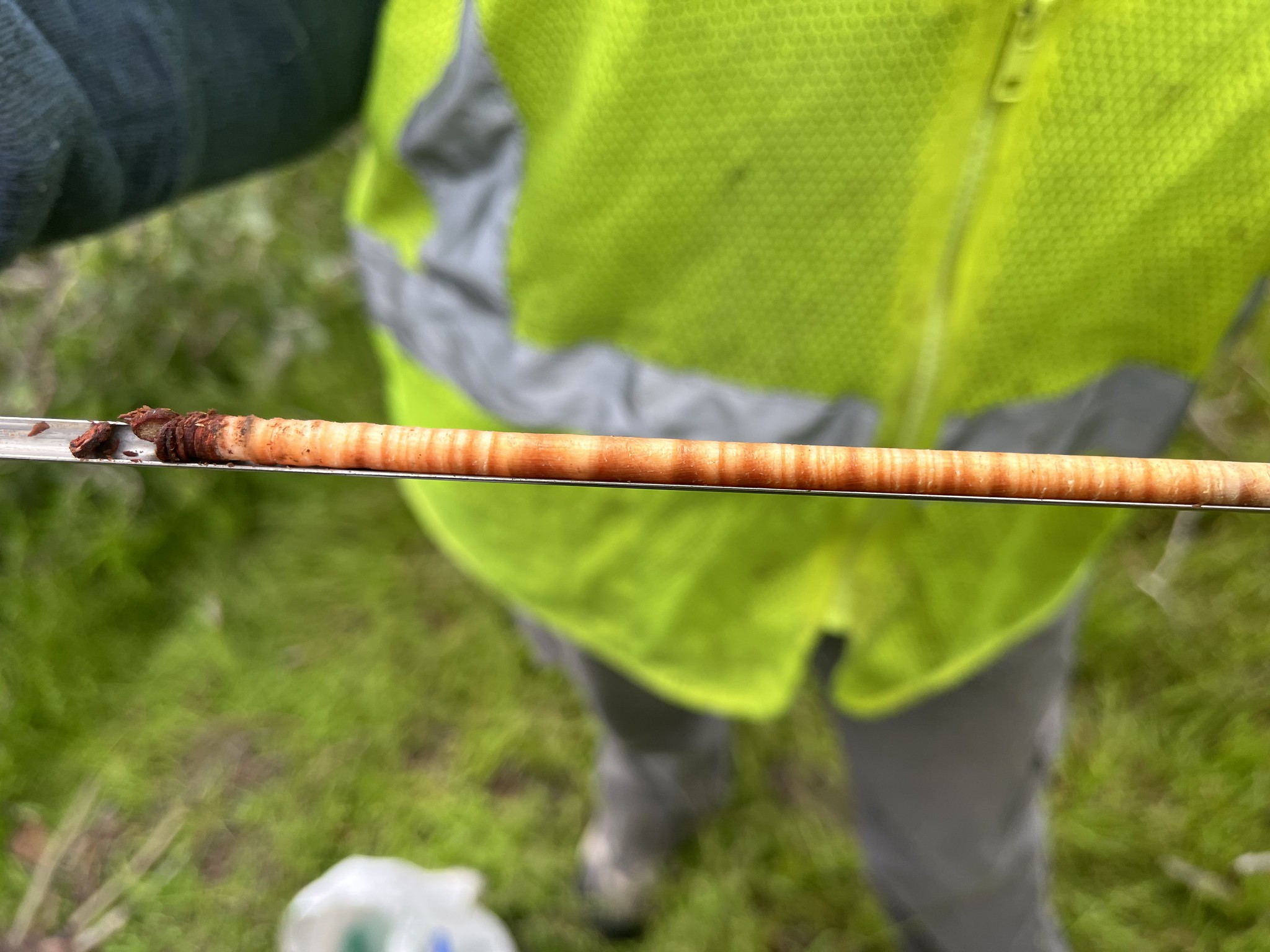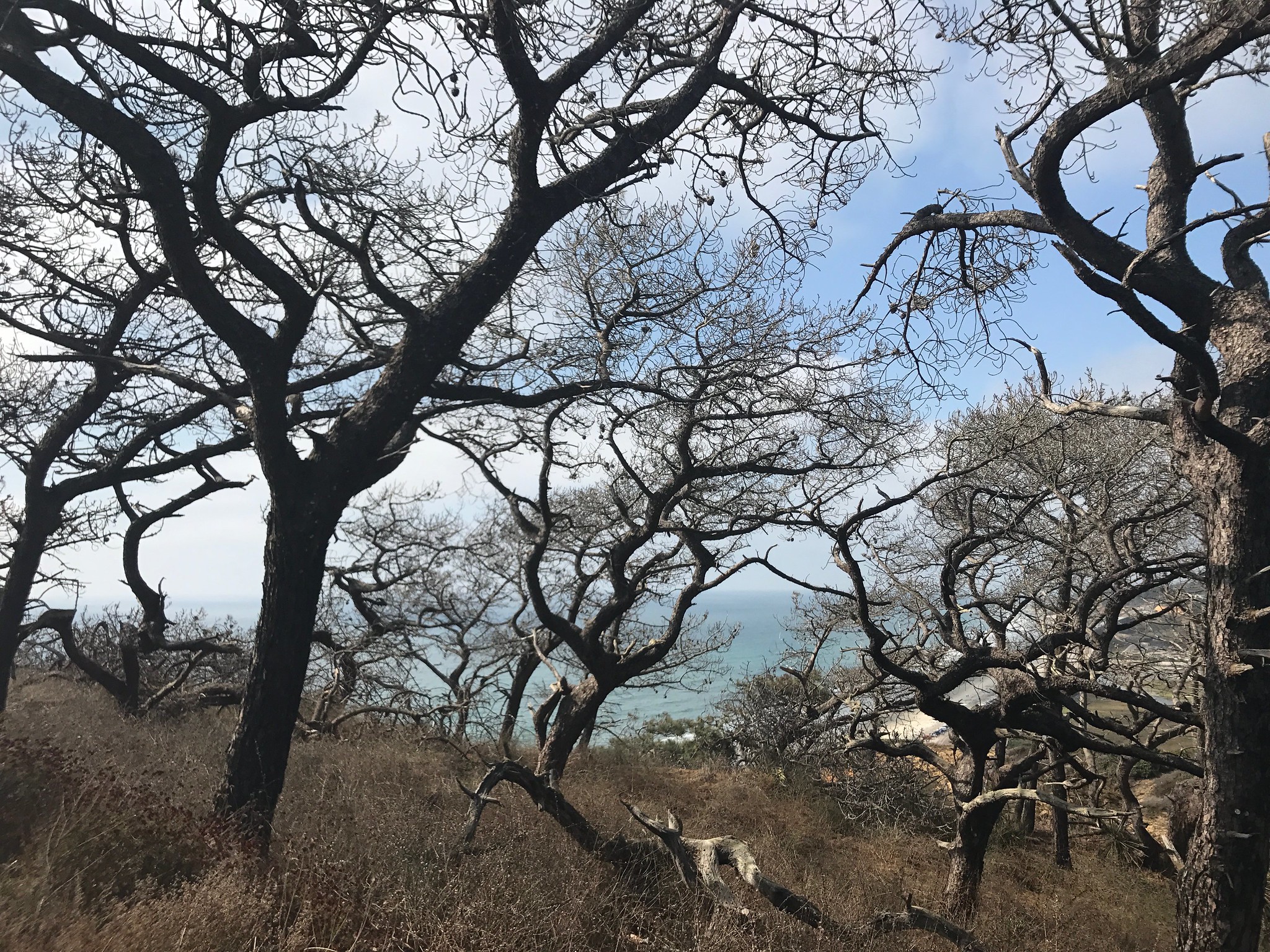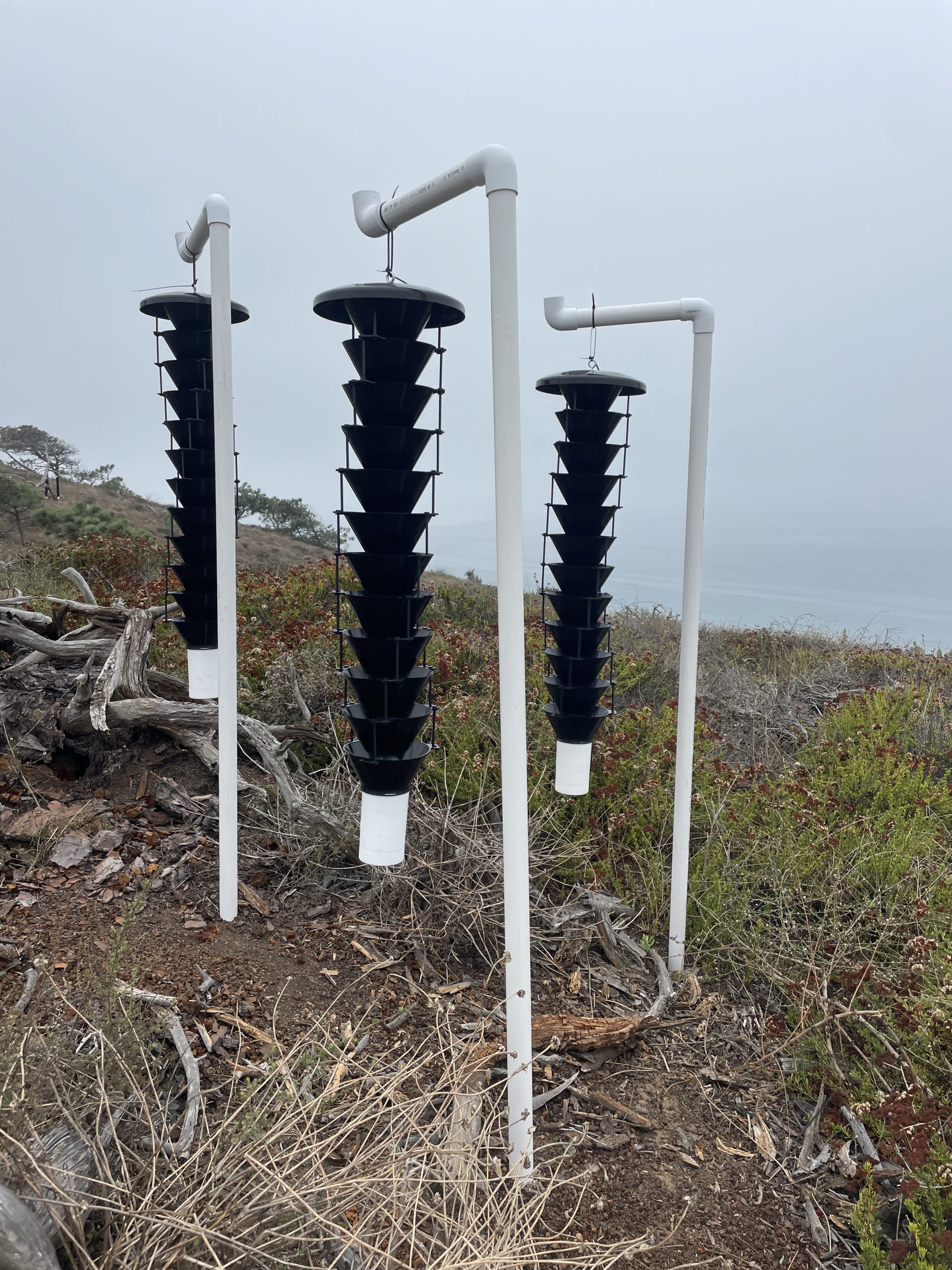Safeguarding California's Endangered Torrey Pines
Each year, millions of visitors walk the trails of Torrey Pines State Natural Reserve (TPSNR), enjoying the rare sight of trees dotting the sandstone bluffs of California’s coastal cliffs. Along one of the main trails, many first-time visitors are surprised to exit the canopy of Torrey pine trees (Pinus torreyana) only to discover a graveyard of trunks and stems carpeting the slope below. Long-time visitors, no longer surprised, still lament the loss of a favorite grove of trees. The California five-spined engraver beetle gets the blame—but the story is more complicated than simply an insect wreaking havoc. The Plant Conservation team at San Diego Zoo Wildlife Alliance (SDZWA) and their partners are trying to learn more in order to help conserve the critically endangered (IUCN Red-List) Torrey pine.
The California five-spined engraver beetle, native to California and the Torrey pine woodland ecosystem, is a regular force of change in many western forests. But the beetle-tree dynamics are shifting in our changing world. Climate change, fire suppression, dense tree planting, and ornamental use of Torrey pines and other trees in surrounding neighborhoods all affect the Torrey pine woodlands at TPSNR. Triggered by a windstorm in 1988 and compounded by drought, the early 1990s saw a loss of over 12% of the main TPSNR stand. A prolonged drought in the 2010s sustained a beetle outbreak leading to similar losses. Stressed trees and a triggering event seem to be the elements needed for beetles to cause such large Torrey pine losses. Although controlling beetles at a landscape scale would be incredibly difficult, management of the ecosystem going forward will hopefully help to prevent losses and focus restoration efforts.

To this end, SDZWA is working with the California State Parks staff and the Center for Plant Conservation to learn more about the Torrey pines, their stresses, and the beetles in order to develop an effective management plan. Work initially began with niche modelling to better understand where the trees still thrive after the losses from beetles and drought. The resulting data helped guide enhancement plantings, conducted within an experimental framework to understand factors influencing recruitment and the potential to establish trees in more drought-friendly (and thus climate change-friendly) locations. Future plantings, informed by these results, will focus efforts in areas where recruitment is likely to be successful and trees are less likely to be stressed by drought.
With support from a U.S. Forest Service grant, the team has expanded the project to take a closer look at stresses in the adult population of Torrey pines. This includes evaluating past patterns of tree die-off and identifying current signs of stress. The team has established 12 monitoring plots where adult trees are assessed along various health variables and their growth is measured. Health variables include examinations of the crown for browning needles and branch loss, categorizing the amount of sap coming from the tree, looking for cankers, and more.
Growth is measured through the use of dendrometer bands, which are belts attached around a tree with a spring that expands as the tree grows. We will compare current growth to historical patterns gleaned through cores to see if there are any environmental (such as direction trees face on a slope) or biological variables (such as tree density) which correlate to low growth or stress. The idea is to identify areas more likely to have stressed trees, to help prioritize management efforts.
And we can’t forget the beetles. While the partners within the U.S. Forest Service are looking for an entomologist to tackle 20 years of historical beetle trap data, the SDZWA team is setting up tests for potential beetle deterrents. A future management plan would consider both trapping and deterrence to help address the beetle threat in different locations across the landscape.

The SDZWA program has a few more years of data collection and analysis ahead before we are ready to help piece together a management plan. Thus far in the project, beetle numbers have been low, and it is unknown what might cause them to spike again. Climate change is increasing the likelihood of prolonged drought and extreme weather events – like tropical storm Hilary that recently hit Southern California. Our goal is to have some management tools in place to help keep any future beetle population spikes from killing trees for years after a triggering event, as has occurred in the past. The beetles aren’t going anywhere—but hopefully neither are the Torrey pines.
-

Torrey Pines State Natural Reserve lost over 16% of their Torrey pine canopy from bark beetles proliferating in a time of extended drought. Photo courtesy of SDZWA. -

CPC has been collaborating with San Diego Zoo Wildlife Alliance and the staff of Torrey Pines State Natural Reserve to Conduct a Reintroduction of Torrey Pine trees in an experimental context. This seedling was planted in 2021. -

The State Park staff have a long-running trapping program to capture beetles. SDZWA is working with the Park and CPC to set up new trapping systems that will help test a chemical deterrence. Photo courtesy of SDZWA.